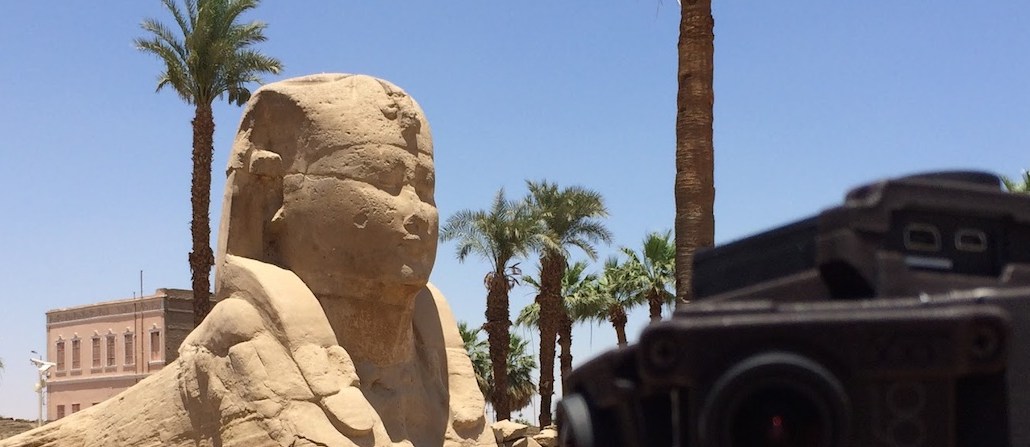
Soothe away those January blues with the ultimate in travel, without leaving the comfort of your home.
January is a busy time for travel companies, and of course this is a particularly busy week for virtual reality too — Oculus Rift finally hit the shelves and VR announcements are coming thick and fast from the Consumer Electronics Show in Las Vegas.
Travel brands like Virgin Atlantic and and Qantas airlines have already been using VR either as in-flight entertainment or as a “try before you buy” technique for their other destinations. But this is just the beginning — there are several ways virtual reality is working well for travel brands.
Driving sales
“A lot of the VR content I see misses the mark,” said Will McMaster, head of VR at specialist agency Visualise. “Companies do it to generate PR around a VR story, hardly any travel companies are thinking of it as an actual tool to increase sales.”
The agency partnered with Thomas Cook and installed Samsung Gear VR headsets in 10 of its U.K. stores, including its flagship Bluewater Concept store, to give users 360 degree experiences (filmed by Visualise) of sites including New York, Singapore, Egypt, Cyprus and Greece.
“We were showing people views from the top of the Rockefeller Center, then they would take the headsets off and buy the tickets for the real-life experience right there. It proved people were more likely to buy it if they were shown it in VR,” claimed McMaster.
Thomas Cook said that over three months, the revenue for New York excursions was up by 190 percent, and flight and hotel bookings went up by £12,000 ($17,500) from people making a purchase after the using the Samsung Gear.

Storytelling
“It’s such an emotional experience when we travel,” said Resh Sidhu, Creative Director for VR specialists Framestore. “For consumers looking for inspiration, there’s nothing more powerful than transporting you there. Pictures don’t do locations justice.”
The agency has partnered with Marriott, which has been dabbling in VR for the last 18 months, first through its “4D” experience Teleporter (users had full-body experiences, like being sprinkled with water while walking on a Hawaiian beach). More recently, this autumn in London and New York, it offered its VRoom Service, allowing hotel guests to order up a Samsung Gear VR fully loaded with experiences to places like Chile, China or Rwanda.
“You meet real people and you learn their stories,” said Sidhu. “It’s really all about the storytelling. There’s inspirational women from Rwanda who are teaching people to make their own ice cream so they can earn their own money.”
While return on investment is not something that Marriott is seeing immediately from VR, in all cases, it does hold people’s undivided attention, a rare thing these days.

However, travel marketers faced with shiny new technologies still need to be reigned in when they want to create immersive experiences for their customers, McMaster admits managing these expectations are the bane of his existence.
“They want to have sky-diving experiences or downhill-ski races, but these just don’t translate well into VR. This is hard for marketers to understand. They are used to a world in advertising where you need to hammer consumers around the head.”
Too much interaction and motion sickness become a problem. Numerous times, McMaster and his team have carried out tests where users become physically sick and nauseous for hours. To try and dissuade the more gung-ho clients, Visualise shows them a “barf reel” — the agency’s collection of really badly shot VR experiences that just didn’t work. But this doesn’t always get the response that the agency aims for. “Still I’ve had two separate instances where the client has wanted the users to feel a bit sick and off-kilter just so that they remember the experience,” he said.
“You want to allow someone to feel more immersed and get used to their surroundings. It works a million times better than hitting them round the head.”
More in Marketing

Ad Tech Briefing: Start-ups are now table stakes for the future of ad tech
Scaled ad tech companies need to maintain relationships with startups, when the sector is experiencing ongoing disruption due to AI.

Inside Kristi Argyilan’s RMN playbook: Lessons from the ‘godmother’ of retail media
Uber’s global head of advertising Kristi Argyilan says the future of retail media hinges on real-time relevance, brand differentiation, and breaking free from a one-size-fits-all playbook.

Digiday+ Research: More than half of marketers invest in TV and streaming, with an eye on impressions and branding
The majority of marketers are directing ad spend toward TV, with a focus on ads that drive impressions and branding.





